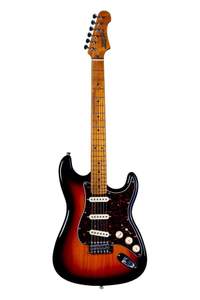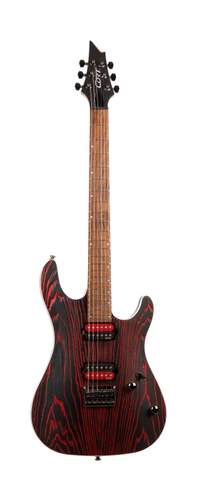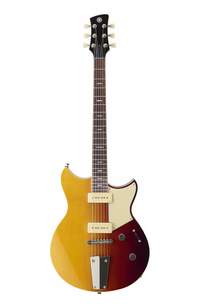Announcement,
Guitar Pickups: An Introduction
Almost all guitar Pickups can be deconstructed to three very basic parts: Magnets (pole pieces, bar magnets, or both), Coiled wire, and structural elements that simply hold the first two elements together. These parts consolidate to form an electromagnetic device that, through magnetism, "picks up" vibrations produced by your string. When you strike a string, the movement of the magnetised string induces a current in the coil, transforming the mechanical energy of the struck string into a weak electrical signal that can then be amplified.
This process is called electromagnetic induction; which is the same process used in dynamic microphones, ribbon microphones, P.A. systems and loudspeakers.
Orientation of the Pickup
The majority of guitars will have two Pickups, one situated close to the neck, which provides a thicker sound, and one close to the bridge, which produces a more treble “twang” sound. With the use of a Position Switch, it allows to choose between Pickups or to blend them together. Some guitars you may find have a five-position switch (popular on Fender guitars), which blends the Pickups and changes their phase relationship to produce “glassy” tones. A third, or middle pickup (commonly found on Ibanez guitars) is provided to produce more sound blending options.
Single-Coil Pickups
The very first electric guitars commonly used single-coil pickups. A single-coil pickup has only one coil of wire. It may have a single magnet, a single magnet with screws for adjustable pole pieces, or a separate magnet for each string. Regardless of the number and arrangement of magnets, it is still a single coil pickup if it has only one coil of wire.
Unfortunately, in addition to producing an electrical signal from a vibrating magnetic field, a coil of wire is a very efficient antenna. A coil of wire will “pluck” electromagnetic radiation out of the air, and we are surrounded everywhere by this radiation. It is very common and most notable that this configuration will create a "hum", produced from dirty signal building wiring, electrical noises from fluorescent lighting, and the most recent source of noise troubling guitarists with single coil pickups: a computer monitor.
The Single-Coil sound
Humbucker Pickups
Gibson introduced the first electro-magnetic pickup, referred to as the “bar.” The first model featuring the "bar" was the Gibson “Hawaiian Electric,” but was quickly adapted to the ES-150 model in 1936 and Gibson banjos by 1938. Made famous by electric guitar pioneer Charlie Christian, the “bar” pickup was extremely successful. Even today it is known as the “Charlie Christian” pickup.
In the 1950s Gibson's team was tasked in designing a pickup that would not be prone to “humming” in the presence of transformers, rheostats, and other electrical interference. Gibson began work in 1954 and within a year later filed a patent application for a pickup that utilised two coils that could cancel or “buck” the hum, commonly known as “humbuckers.”
Humbucker: A Little Deeper
A humbucker uses two coils and either two magnets (or sets of magnets), or pole pieces at opposite ends of a single magnet. Contrary to popular belief it is incorrect, or at least very misleading, to say that the two coils are “out-of-phase.” When speaking strictly of electrical coils by themselves, they are said to be “in-phase” when they are wound in the same direction. However, pickups are said to be “in-phase” when their signals are in phase (the signal generated in one pickup adds to the signal generated in the other, instead of subtracting from it). In a humbucking pickup, the two coils are wound with opposing electrical polarity, but the magnetic polarity for each coil is also reversed. Without going into great technical detail, this means simply that each coil carries two signals; the string vibration signal, which is reinforced, producing a thick, meaty sound, and the noise signal, which is cancelled.
The double-coil "Humbucker" sound
Many guitars have a combination of single- and double-coil pickups. It’s also common for a double-coil pickup to have a switch that will turn one of the coils off to offer the player a choice between single- and double-coil configurations.
P-90 Pickups
While P-90s are in essence full-fledged single-coils in every technical respect, they occupy a sort of sonic middle ground between the "Twangy" single-coil and "Hotter" thehumbucker spectrum.
Although P-90s sport all the dreaded hum that can plague single-coil models of all stripes, the P-90 produces a far deeper and fuller-range voice than your garden-variety single-coil pickup. P-90s are renowned for their mid-ranged focused “bite” with accented lows with significantly higher output than most other single-coils. Frankly, they are one of the most tonally flexible pickups you can buy and are found in every style, from atmospheric blues to hard rock to ultra-clean jazz.
A Basswood Strat body features an SSS ceramic pickup configuration, with a single volume and tone knob plus 5-way switch.
Designed with today’s metal sounds in mind, the EMG RetroActive Super77 pickups provide a very clear high output with superb articulation and focus on the low strings and a singing high-end.
In positions two and four, a slight delay is added to the other pickup for a cool phase shift that differs from the classic in-between sounds that are available on so many other guitars three pickup guitars and virtually never on two pickup instruments.









